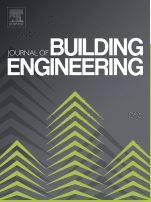The construction of zero energy buildings has been an impactful response to global warming and energy crises. Despite numerous approaches to model net-zero-energy buildings, it is still a challenge for building designers to evaluate the possibility of achieving this goal during the architectural design phases. This article, therefore, aims to offer a systematic framework for a feasibility study of zero energy buildings suitable for the design process. By applying a well-structured method of identifying residential prototypes in the city of Shiraz in Iran, the paper develops a parametric model, considering both geometric prototypes and non-geometric parameters, which generates a large number of options for the analysis of buildings’ energy consumption and photovoltaics’ electricity generation. Although multivariable parametric analysis leads to broad solution space, the large size of option space is a barrier to implement effectively and regularly during the design process. Thus, using a statistical design of experiment, we apply a reduction strategy that leads to a valid yet relatively fast analysis process. Finally, to identify the parameters with the highest impact on energy use intensity, we post-process the results and perform a sensitivity analysis. With the current patterns and configurations of the residential buildings in the region under investigation, the results show that achieving net-zero-energy building is highly feasible by improving the buildings’ envelope and construction and the interior lighting power density. The study suggests that the wall insulation, infiltration, and lighting load are the most significant parameters affecting the region’s energy performance.
View the full article published in Volume 35, March 2021,101960 of the Journal of Building Engineering.

